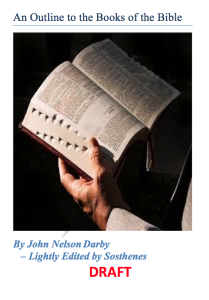 In Isaiah we have the whole framework of God’s dealings with Judah, Israel coming in later, with the judgment of surrounding nations, and especially of Babylon. Israel is the centre, and the Assyrian is the great latter-day enemy; Immanuel is the hope of Israel, and the securer of the land. He, though Himself Jehovah, is rejected when coming as a testimony: a sanctuary, but a stone of stumbling to the disobedient. We get, in addition, the details of the inroads of the Assyrian, and his judgment in the last days; and, included in the development of all this, we have the blessedness of Israel as re-established. This is the first part – chapters 1-35.
In Isaiah we have the whole framework of God’s dealings with Judah, Israel coming in later, with the judgment of surrounding nations, and especially of Babylon. Israel is the centre, and the Assyrian is the great latter-day enemy; Immanuel is the hope of Israel, and the securer of the land. He, though Himself Jehovah, is rejected when coming as a testimony: a sanctuary, but a stone of stumbling to the disobedient. We get, in addition, the details of the inroads of the Assyrian, and his judgment in the last days; and, included in the development of all this, we have the blessedness of Israel as re-established. This is the first part – chapters 1-35.
In the historical chapters (36-39) we get two great principles – resurrection, and deliverance from the Assyrians. It is a risen Christ who effects deliverance, which makes it so important. The captivity in Babylon is intimated here. This lays the ground for what follows.
In the last part we have God’s controversy with Israel, first on the footing of idolatry, and, secondly, because of the rejection of Christ. In this Israel is first looked at as a servant; and in chapter 49 the place of servant is transferred to Christ. He is rejected, and the remnant in the last days take the place of servant. All through this, though Israel be the object of favour, you get a definite contrast between the wicked and the righteous, and hence the separation of the remnant, and judgment of the wicked. There can be no peace to the wicked, whether Israel or others (end of chaps. 48, 57).
In the part that refers specially to the rejection of Christ we get the revelation of the call of the Gentiles, the judgment of the people, the coming of Jehovah, and the full blessing of the remnant of Israel at Jerusalem.
